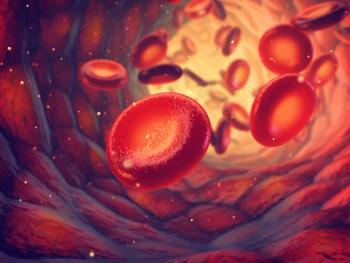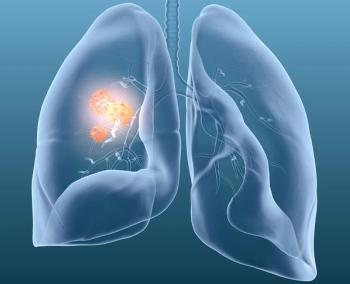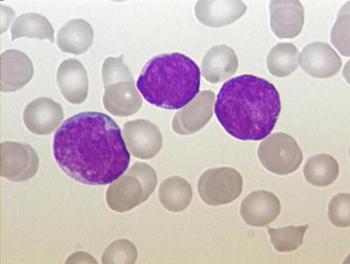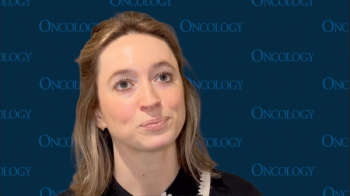
Conflicts of Interest in Medicine: What About Ties to Payers?
Recently, the US government released new “Sunshine” standards requiring more rigorous disclosure of potential financial conflicts of interest in medicine. Such new standards are driven by revelations of misdeeds on the part of pharmaceutical and device manufacturers.
I learned on a recent trip to Hawaii that when one stands with one’s back to the sun, one can often see enormous arches of surpassing beauty. These sunlight-generated rainbows are, of course, insubstantial illusions.
Recently, the US government released new “Sunshine” standards (H.R. 836: Sunshine on Conflicts Act of 2013) requiring more rigorous disclosure of potential financial conflicts of interest (PCOIs) in medicine. Such new standards are driven by revelations of misdeeds on the part of pharmaceutical and device manufacturers. In December, Peter C. Gtzsche, an epidemiologist and professor at the Nordic Cochrane Centre joined others in bashing pharmaceutical companies and the researchers who work for them: “
While bringing PCOIs into the sunshine, however, the new regulations leave other major types of conflict lurking in shadow.
To try to illuminate the nature of “shade” conflicts, I introduce the Theory of Conservation of Conflict of Interest, which states that each and every new proposal for commercial provision of a drug, device, or medical service immediately results in the generation of opposite, quantitatively equivalent PCOIs, both on the part of those companies that will profit from sales, as well as those entities that bear the cost.
This theory borrows shamelessly from the world of particle physics in which, starting at the Big Bang, particles of matter and particles of antimatter were generated; a positron for each electron, etc. Similarly, in public health, for each new drug, device, or service marketed, there will be instantaneous creation of elementary particles; profitrons (+$B) and debitrons (−$B), (B = one billion dollars).
For example, when a company announces it will offer a new product at a price expected to generate net total sales of one +$B, this event results in the immediate spontaneous creation of one −$B particle affecting other private, governmental, and corporate providers. This profitron event will predictably elicit characteristic PCOI-driven responses on the part of some clinicians, scientists, marketing executives, lawyers, and politicians, who will work to foster sales, with research data, ads, or media commentary, in exchange for personal benefit from promotion, salary, bonus, grant support, professional advancement, reelection, etc. On the flip side, administrators and researchers who work for payers, including insurance companies; HMOs; and local, state, and federal governments, might benefit similarly by mobilizing to provide evidence supporting denial of healthcare expenditures.
I am certain that few doubt or deny the deleterious impact of PCOI profitrons, as exemplified by Dr. Gtzsche, but, in the case of healthcare providers; managed care organizations; HMOs; and local, state, federal, and private insurers, there is much more limited evidence to suggest that equivalent debitron-driven forces have comparable impact.
A Web search on “healthcare and corporate scandal” quickly retrieves many citations to articles detailing abuses attributed to major healthcare insurers and providers in the United States. Space permits only a few illustrative examples. Kaiser Permanente was reported to have
A particularly striking example is contained in the following dialogue from Michael Moore’s documentary film Sicko.
“I am here primarily today to make a public confession: In the spring of 1987, as a physician, I denied a man a necessary operation that would have saved his life, and thus caused his death. No person and no group has held me accountable for this, because in fact, what I did was I saved a company a half a million dollars for this. And furthermore, this particular act secured my reputation as a good medical director, and it insured my continued advancement in the healthcare field. I went from making a few hundred dollars a week as a medical reviewer, to an escalating six-figure income as a physician executive.”[4]
It would appear that the primary reason we don’t know much about debitron-driven PCOIs is that we simply don’t look. Neither statute nor editorial practice requires disclosure of provider PCOIs.
To return to Dr. Gtzsche’s research and its impact, we might speculate upon how a researcher might benefit from publications not funded by commercial interests. While clinicians’ PCOIs arise from financial compensation from fee for service, and researchers’ from grant funding, what about epidemiologists and methodologists? They don’t derive income from clinical practice. Who then pays for their work? Might they derive income from research, publication, and testimony for healthcare insurers and providers? I don’t have a clear answer, because as noted, editors typically don’t require such disclosures of authors. In addition, sorting out sources of research funding may be complex, with grant dollars from nonprofit corporations ultimately derived from government or health industry sources.
For example, Dr. Gtzsche’s employer, the Cochrane Collaboration’s Web site
New information throws some sunshine onto this shade. Dr. Gtzsche is also a prominent critic of mammographic screening, particularly in women below the age of 50. His
It is likely that the publications of Gtzsche and other anti-screening researchers and commentators may have influenced the decisions of guideline groups, like US Preventive Services Task Force (USPSTF), to recommend against screening of younger women, with resultant Centers for Medicare & Medicaid Services (CMS) and private-payer coverage denials, leading to reduced screening participation of younger women-with a disproportionate impact on low-income women. It may also be possible that many women with coverage may have opted out of mammographic screening based on adverse media coverage.
There is emerging evidence to suggest such speculation may reflect real concerns. Sharpe et al, from Thomas Jefferson University Hospital, reviewed billing data to
But this may be just the tip of a fiscal iceberg; we have little idea how much private payers will save. Mayo Clinic researchers document an
What about the public health? A
To conclude, I believe that emerging evidence suggests that research funded by payers that provides evidence of low effectiveness or poor cost-effectiveness can be used by payers to restrict or deny payment for a medical service, resulting in lower expenditure and enhanced profitability-at least in the short run-and can cause enormous harm. Readers and policy makers need to know whether epidemiologists and others conducting similar research have such PCOIs. If their research is funded directly or indirectly by CMS, Blue Cross, or another private payer then this information should be disclosed.
References:
References
1. Gøtzsche PC. Big pharma often commits corporate crime, and this must be stopped. BMJ. 2012;345:e8462.
2. Gøtzsche PC. Corporate crime in the pharmaceutical industry is common, serious and Repetitive. The Nordic Cochrane Centre. http://www.cochrane.dk/research/corporatecrime. Accessed Apr 4 2013.
3. Ornstein C. Kaiser Clerks Paid More for Helping Less. Los Angeles Times. http://articles.latimes.com/2002/may/17/local/me-kaiser17. Accessed Apr 4 2013.
4. Moore M. Sicko [DVD]. United States: Weinstein Company, 2007.
5. The Cochrane Collaboration. The Collaboration’s funders. http://www.cochrane.org/about-us/funding-support. Accessed Apr 4 2013.
6. Gøtzsche PC, Olsen O. Is screening for breast cancer with mammography justifiable? Lancet. 2000;355:129-134.
7. Gøtzsche PC. Mammography Screening: Truth, Lies and Controversy. London: Radcliffe Publishing Ltd; 2012:400.
8. Sharpe RE Jr, Levin DC, Parker L, Rao VM. The effect of the controversial US Preventive Services Task Force recommendations on the use of screening mammography. J Am Coll Radiol. 2013;10:21-24.
9. Gross CP, Long JB, Ross JS, et al. The cost of breast cancer screening in the Medicare population. JAMA Intern Med. 2013;173:220-226.
10. Rattue P. Mammogram Rates In U.S. Have Dropped. Medical News Today. http://www.medicalnewstoday.com/articles/247278.php. Accessed Apr 4 2013.
11. Johnson RH, Chien FL, Bleyer A. Incidence of Breast Cancer With Distant Involvement Among Women in the United States, 1976 to 2009. JAMA. 2013;309:800-805.
Newsletter
Stay up to date on recent advances in the multidisciplinary approach to cancer.

















































































